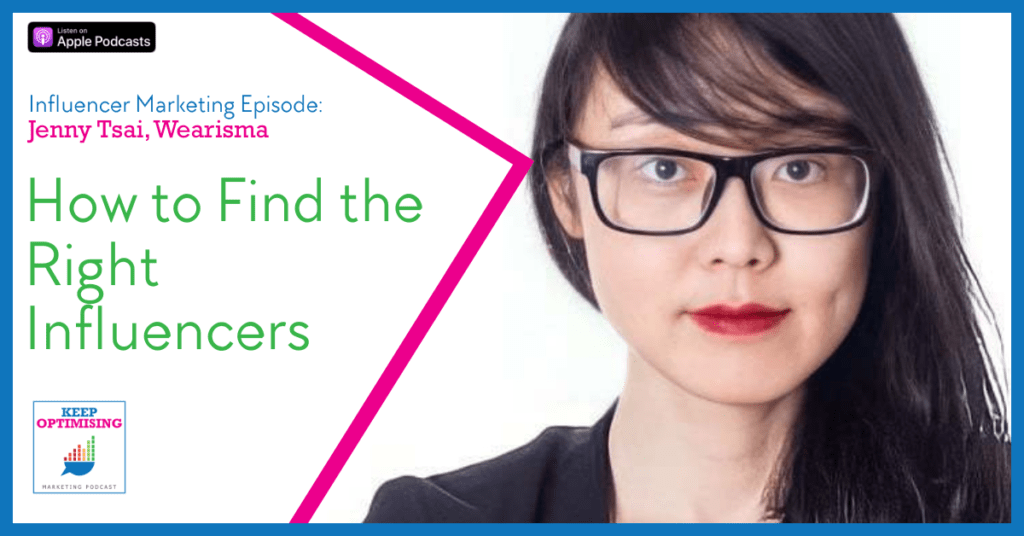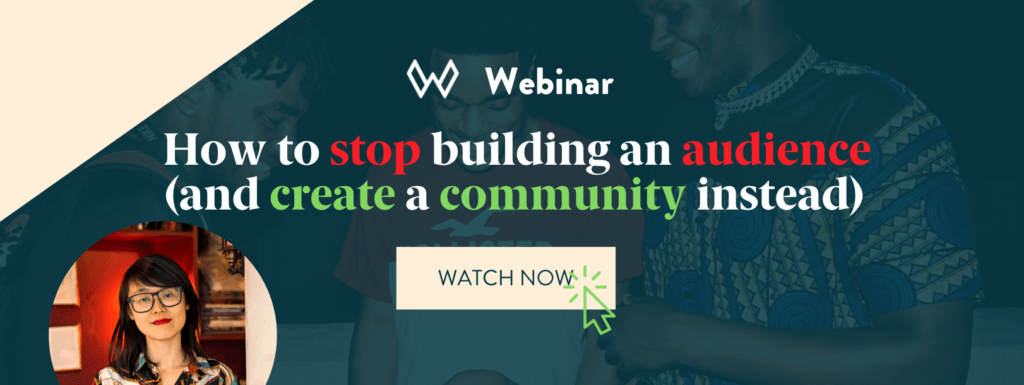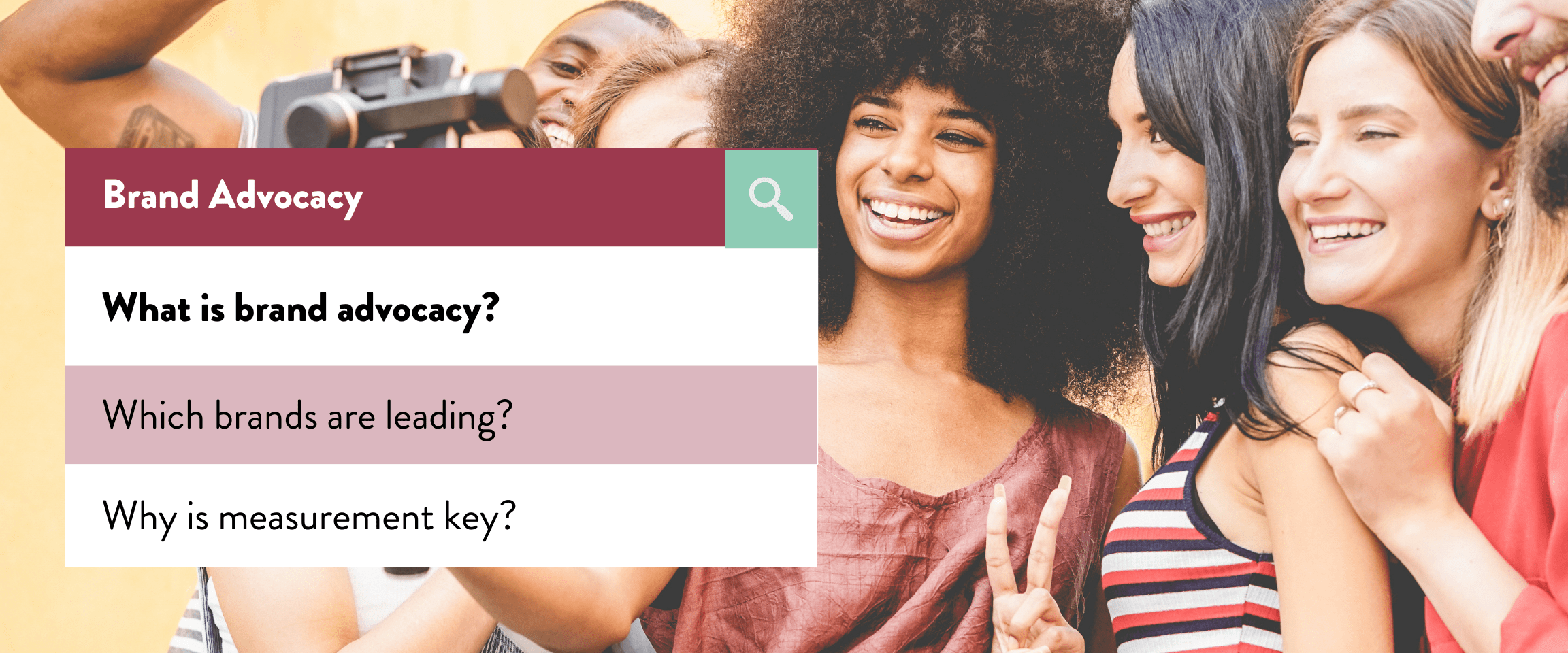
You don’t just need influencers, you need brand advocates
Traditionally, brands have clamoured to work with influencers based on their hyper-visibility and their ability to generate engaging content, but all of that is changing. In Wearisma’s 2021 Brand Advocacy research (coming July 2021), 74% of people stated that more recommendations from people they know would encourage them to purchase from brands. It’s clear that a new type of influencer is poised to dominate the digital realm. Discover what you can learn from those leading the way in brand advocacy and why measurement is the key to a successful brand advocacy program.
What is brand advocacy?
As coined by Wearisma’s Head of Client Services Charlotte Darby, “Influencer marketing has returned to the days of the Avon Lady”. In fact, Avon’s door-to-door sales representatives were arguably the original brand advocates. Representatives tended to be either a friend or acquaintance who had in-depth knowledge not only of Avon’s products but the beauty space in its entirety. Their sales tactics were so successful because these representatives were trusted, a factor that often separates traditional influencers from brand advocates.
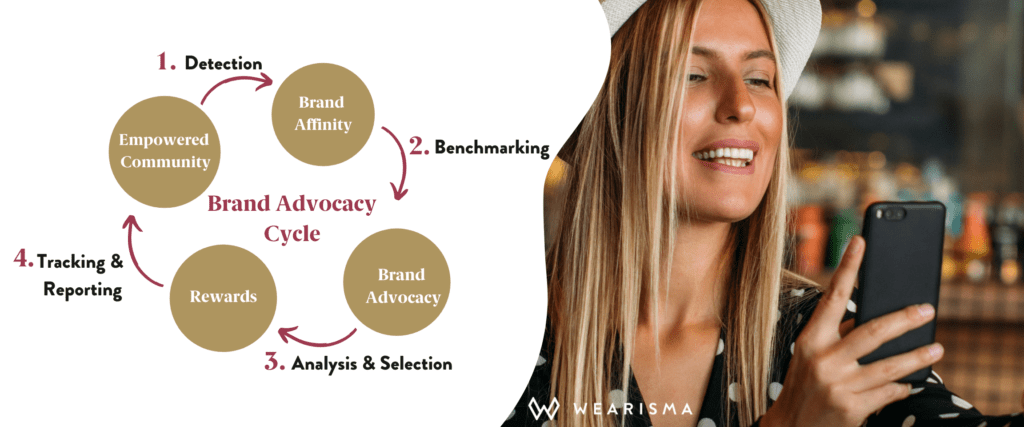
Brand advocates are loyal customers who actively promote your brand through positive reviews, recommendations and so on. While traditional influencers can be advocates, advocates usually come in three forms:
- Loyal customers: individuals who buy into your brand and have a genuine affinity for your products/services but may not have a substantial following on social media.
- Key opinion leaders (or KOLs): influencers who are experts in their respective fields, who post trustworthy and authentic content and typically have a large and highly engaged audience.
- Employees: members of your brand’s organization who are passionate about your products and services
Why is brand advocacy so important?
As highlighted by Olivia Tongo, Marketer, Strategist and Founder of ‘Life Of A Marketing Girl’, the rise of advocacy programs is coinciding with the savviness of the everyday consumer. “Influencers contribute hugely to brand awareness which will increase sales, however, once that campaign is complete and they are no longer promoting that brand, will their followers still be that brand’s customer? Customers are much more aware and see through what is being put together to entice them to make a purchase VS making a connection and showing them products and services, which will benefit them, not just by one purchase but by buying into the brand completely. Which brand advocacy tends to have more of a better strategy”.
Brand advocates don’t just create content. Brand advocates create valuable conversations surrounding your products and services that support your overall brand narrative and fosters the creation of a loyal customer base. A perfect mixture of influencer marketing and C2C marketing, brand advocacy has the capacity to build brand awareness, increase engagement and impact your bottom line. As Tongo states, “Brands have had to lean on brand advocates to drive core messages home to their customers, so they can relate but also retain customers especially in challenging times.”
Choose your brand advocates wisely
It’s important to remember that not all brand advocates are made equally. Despite an influencer, KOL or employee being passionate about your brand they may not be the right advocate for your brand for several reasons, chiefly:
- They may not produce high or above-average Engagement Rates, meaning that their content is not resonating with their audience.
- Their previous content or brand allegiances might make them an unsuitable fit for your brand’s DNA.
- Their advocacy may not translate into sales.
For these reasons and more, it’s imperative that brands have:
- Intelligent discovery tools to help them identify even the most niche brand advocate whose followers aligns with the brand’s target audience.
- Access to reliable metrics to help them benchmark the performance of their chosen advocates.
- Access to an advocate’s historical data to avoid brand reputation risk.
With research revealing that consumers rely on peer-to-peer marketing 2-10x more than paid media (Boston Consulting Group), brands simply cannot afford not to develop a solid brand advocacy program.
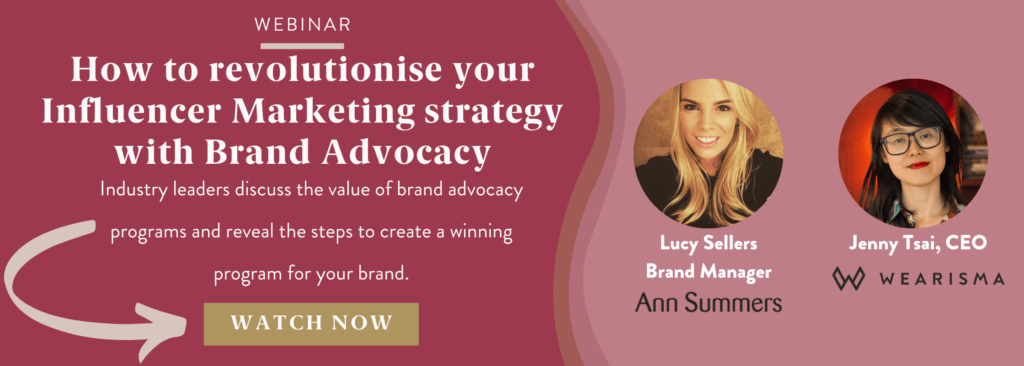
5 Brands who are leading the way in Brand Advocacy
Monzo
Monzo’s approach to advocacy in marketing takes a different approach, mainly due to their status as a growing fintech business. By focusing on socially conscious content and creating a dialogue with real customers, they have built a dedicated community of brand advocates.
A highlight of the success of Monzo’s advocacy initiatives comes from ethical and sustainability KOL Lizzie Carr (Lizzie Outside on Youtube). Lizzie’s YouTube video, which revealed the unethical practices of highstreet banks compared to more ethical banks like Monzo, achieved a whopping 113.62% ER – the top-performing content for Monzo in 2020.
According to Olivia Tongo, the pandemic has further cemented the importance of brands using advocates to relay their message of social and corporate responsibility. “The conscientiousness of standing for something has been never more vital than right now. Brands today have had to put more effort into not just selling something but also expressing as a business what is important to them from a personal perspective. They’ve had to lean on brand advocates to drive core messages home to their customers, so they can relate but also retain customers especially in challenging times.”
PrettyLittleThing
Early adopters of brand advocacy programs, fast fashion giant PrettyLittleThing (PLT) created their ‘PLT Style Squad’ back in 2016. Chosen advocates or “brand representatives” would have “creative freedom” to produce regular content for the brand in exchange for a monthly clothing allowance and a chance to feature in a campaign. PLTs focus on User-Generated Content (UGC) alongside their reward system has seen them achieve great success.
Every PLT influencer posted approximately 3.7 pieces of content in Q4 2020, which contributed to the brand achieving a 3.5% Engagement Rate (ER) on Instagram – above average for fashion content in the UK and US.
PLT’s top-performing advocate for this period was Annika (@annika.gser on Instagram and @itisnika on TikTok) – a German-based Micro influencer with <10K followers, who posted 13 pieces of content, more than 4 times the average. Annika’s loyalty to PLT amounted to a 28% ER which is 7x higher than the average ER for fashion content on Instagram in Europe!
Ann Summers
Ann Summers’ Brand Manager Lucy Sellers reveals that cultivating a community of empowered women is at the heart of everything they do. “We empower our customers and community of women who come to us looking for that expert advice. True brand advocates like ours share your values, and at Ann Summers we have hundreds of thousands of women who are united in wanting the same thing we do – sexual empowerment for every woman.”
Ann Summers encourages their community to share creative and inspiring UGC with their #styledwithAS hashtag. During the final quarter of 2020, their influencer advocates posted 3 times on average, gaining an above-average ER of 3.9%. “Our UGC is a testament to that and every week we get thousands of tags from our community online wearing our product. We have genuine stories of our customers who have gone from tagging us in their posts, to featuring in our campaigns, and are now firmly a part of our diverse girl squad” says Sellers.
Starbucks
Starbucks has long invested in community building and has looked internally to do so. Their traditional loyalty program employs their staff as brand advocates (whom they refer to as partners) with the intention of building loyalty through fun and engaging content.
Employee advocates have been so successful for Starbucks that content surrounding baristas are particularly fruitful. For example, the top-performing content in Q4 2020 came from YouTuber Parker Pannell, whose video, which recreated a Starbucks store in his home, generated an ER of 136% among the highest for the brand in that period. Similarly, Wearisma’s platform identified Food/ASMR YouTuber Jane (Jane ASMR 제인 on YouTube) as a strong advocate for the brand. Starbucks featured in 9 of their (almost triple the average) videos, generating the highest engagements (19M) for the brand in this period.
Sephora
In 2019, Sephora launched its #sephorasquad Brand Advocacy program which aimed to gather “a crew of unique, unfiltered, sorry-not-sorry storytellers with a diverse range of followers, points of view, and interests”. The program generated impressive results for the brand, which achieved an impressive 8% Engagement Rate in the same year.
While the intention of the program may have been to discover new voices, the beauty giant didn’t need to look too far for a winning brand advocate. Wearisma’s analysis revealed that in 2019 the top-performing content for #sephorasquad came from a Sephora employee tweeting about wanting to become a squad member. The tweet generated a 35% ER, a staggering 12x higher than the average ER for beauty content in the US!
Cultivating a strong group of loyal brand advocates is no easy feat. Watch our new Webinar where Wearisma’s CEO Jenny Tsai is joined by Ann Summer’s Brand Manager Lucy Seller, giving you the insights you need to achieve your KPIs through a successful brand advocacy program!

